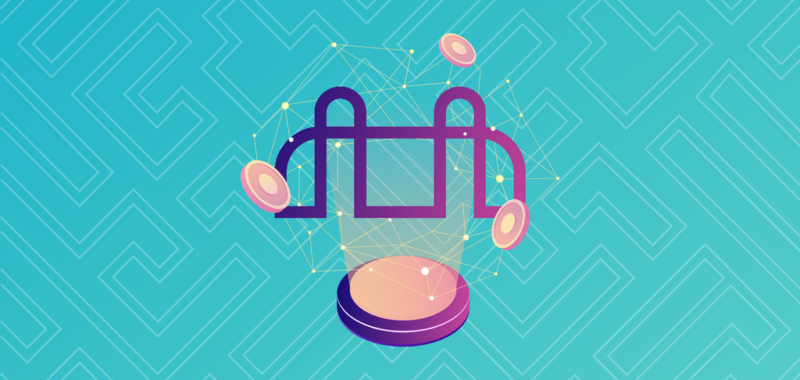Decentralized prediction markets such as MYRIAD, launched by Decrypt and Rug Radio, have rapidly gained traction in recent years, enabling users to bet on the outcomes of events such as the U.S. Presidential election.
So what are decentralized prediction markets, and how do they differ from conventional prediction markets? Read on to find out.
What are prediction markets?
Prediction markets have existed in one form or another since the 16th century. They allow users to speculate and bet on the outcome of any future event—as long as someone has set up a market for it.
Users can bet on the outcome of sporting events, elections, legal cases, and anything with a clear or provable outcome. The core concept is very simple: if your prediction is right, you win money. If you’re wrong, you lose the money you used to place the bet.
The mechanics that underpin them are deceptively simple. The price of one “share” in a prediction market ranges from between $0.00 to $1, and its price correlates to its percentage chance of winning, or its “odds.”
For example, if a share for one candidate in an election costs 63 cents, that candidate has a 63% chance of winning, according to this specific market. If you want to bet on the outcome of the election, you’d buy shares of whichever candidate you think will win. When the election is over, the market will resolve, and the price will go to $1.00 per share for whichever candidate won. The lower the odds of something happening, the cheaper betting on it will become, and vice versa.
There are several different types of prediction market.
- Binary markets are markets with two options that will resolve to either $1 or 0 (yes, or no), such as “Will it rain on Monday of next week”?
- Categorial markets are markets with multiple options, such as “Who will win the U.S. Election in 2024?”
- Scalar markets are markets that resolve based on whether something is higher or lower than a specified bound, such as “Will the population of the U.S. be higher or lower than 333 million in its next census?”
When participating in a prediction market, you can sell your shares at any time. There’s no lockup period, and you aren’t required to wait until the event being speculated on has come to a conclusion.
Continuing with the election example, if you believed that one candidate was going to absolutely crush the other in an upcoming debate, you could buy that candidate’s tokens, expecting them to go up in price after the debate, and sell them once the debate concluded. The odds, and therefore the price of each share, are constantly changing in real-time, because they’re free markets, controlled only by the supply and demand of each share.
Similarly, when betting on a sporting event, the odds will likely change in real-time as the game progresses, and the score changes.
Decentralized prediction markets typically use oracles, which take off-chain, real-world data and make it usable on a blockchain, to determine the outcome of an event and resolve disputes. For example, a decentralized prediction market can use an oracle to let anyone submit proof of an outcome, while anyone can challenge it.
How does MYRIAD’s decentralized prediction market work?
Created by DASTAN, the parent company of Decrypt and Rug Radio, MYRIAD is a decentralized prediction market.
There are two main models for ensuring liquidity in a decentralized market; order books and automated market makers (AMMs). AMMs use a mathematical formula to price assets,where order books match buyers with sellers based on their orders, through a centralized exchange method.
MYRIAD’s prediction market uses an AMM model; because AMMs don’t rely on a counterparty to match orders, they can function even when there’s low liquidity. Any user can provide liquidity for any market—as opposed to centralized prediction markets, where only the centralized market maker is responsible for providing all liquidity.
Advocates of decentralized prediction markets highlight the fact that because they can take in liquidity from anywhere, they tend to have much liquidity than their alternatives.
Decentralized prediction markets like MYRIAD use incentives to attract liquidity.
When a user participates in a prediction market on MYRIAD, they receive shares in that market, which can be traded while the market remains open—enabling them to enter and exit with markets that settle over a long time horizon.
MYRIAD’s constant function ensures that the number of shares in a market’s liquidity pool always remains constant. When an imbalance is introduced by adding or removing shares to a liquidity pool, the price of outcomes on the market change, and shares are redistributed between the trader or liquidity provider, and the share pools.
The future of prediction markets
Mainstream media has increasingly looked to decentralized prediction markets as a legitimate means of predicting outcomes, with media outlets like the Wall Street Journal and Newsweek reporting on prediction market odds alongside traditional polls.
Decentralized prediction markets claim to be more efficient than their centralized counterparts because they lack intermediaries, and as a result have fewer fees. Their decentralized nature also allows for a higher degree of privacy than in traditional prediction markets, and many prediction markets use cryptocurrency as a means of payment, making them more accessible to players around the world.
That also means that decentralized prediction markets have thrown up challenges for regulators, since laws around gambling, securities and contracts differ between jurisdictions.
Crypto prediction markets have faced regulatory scrutiny, with a U.S. Commodity Futures Trading Commission (CFTC) spokesperson noting that, “offering or facilitating a product or activity by way of releasing code onto a blockchain does not absolve any entity or individual from complying with pertinent laws or CFTC regulations,” in response to a question about Augur. In 2022, Polymarket was hit with a $1.4 million fine by the CFTC, which accused the prediction market of letting people make bets without being registered.

